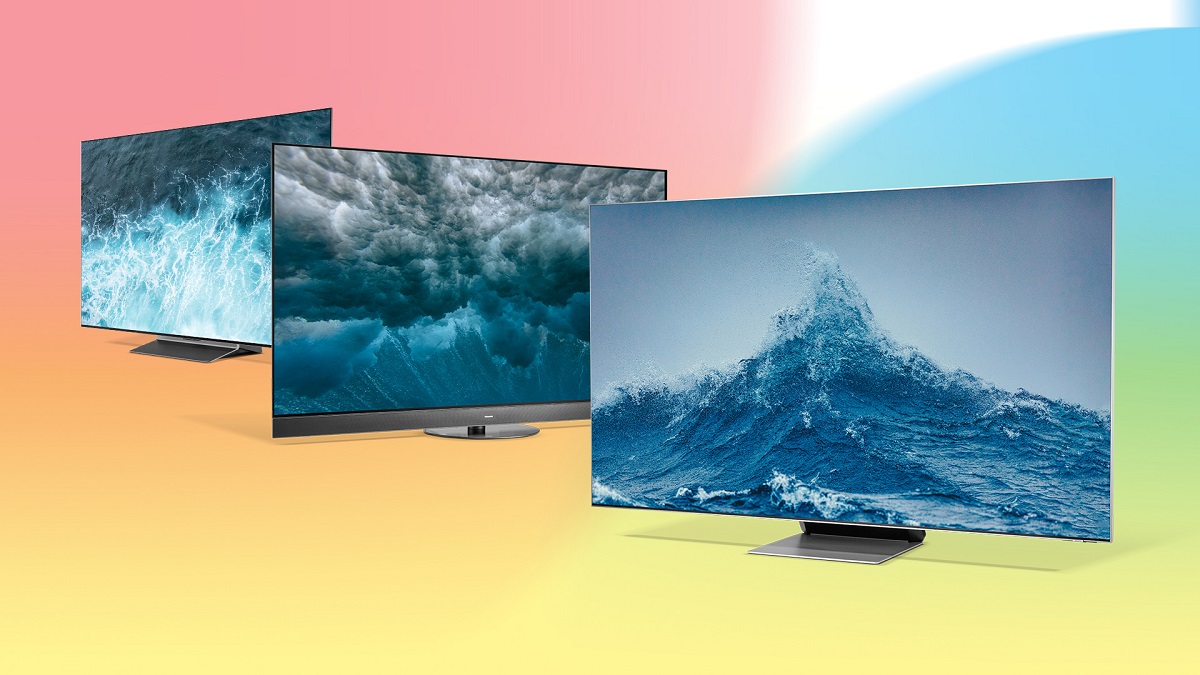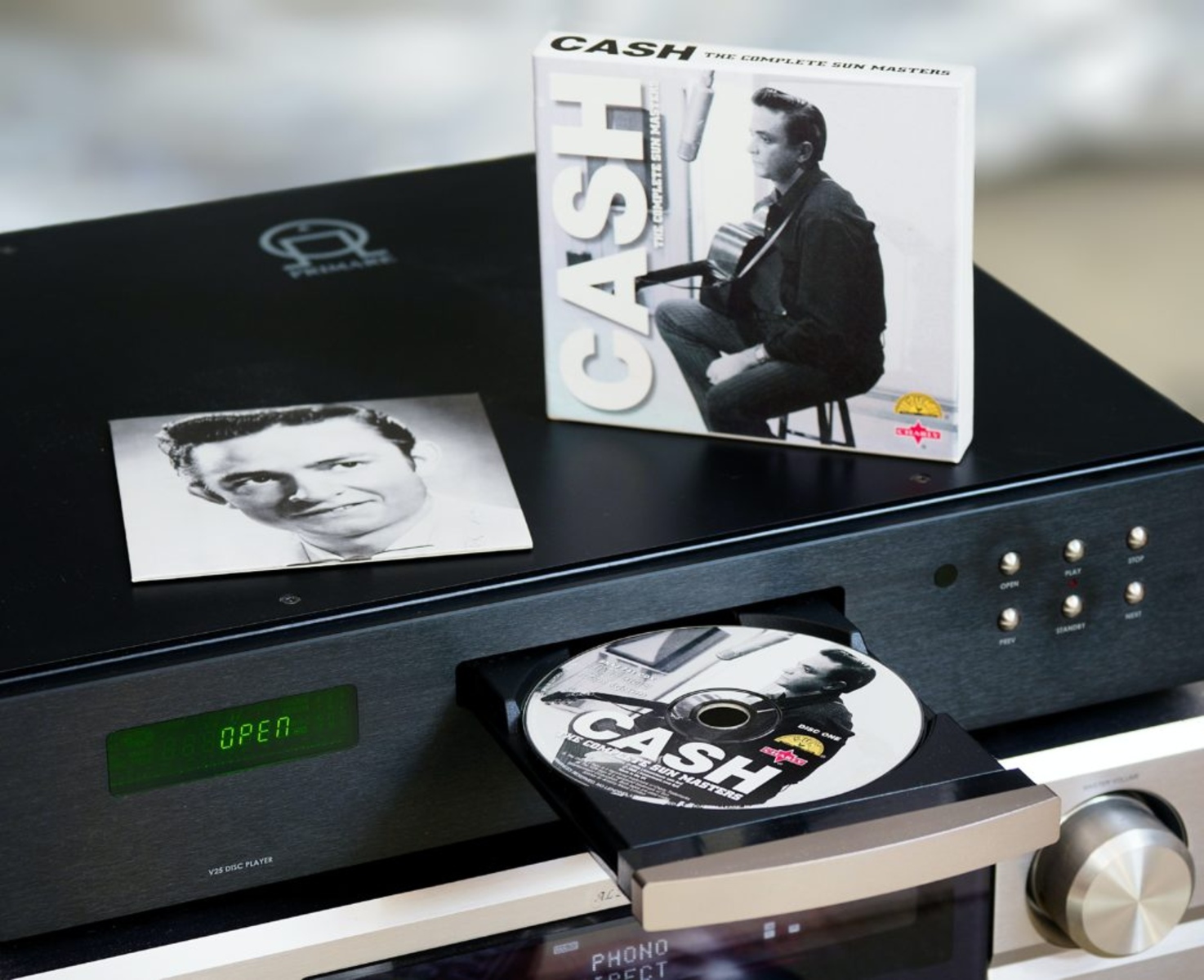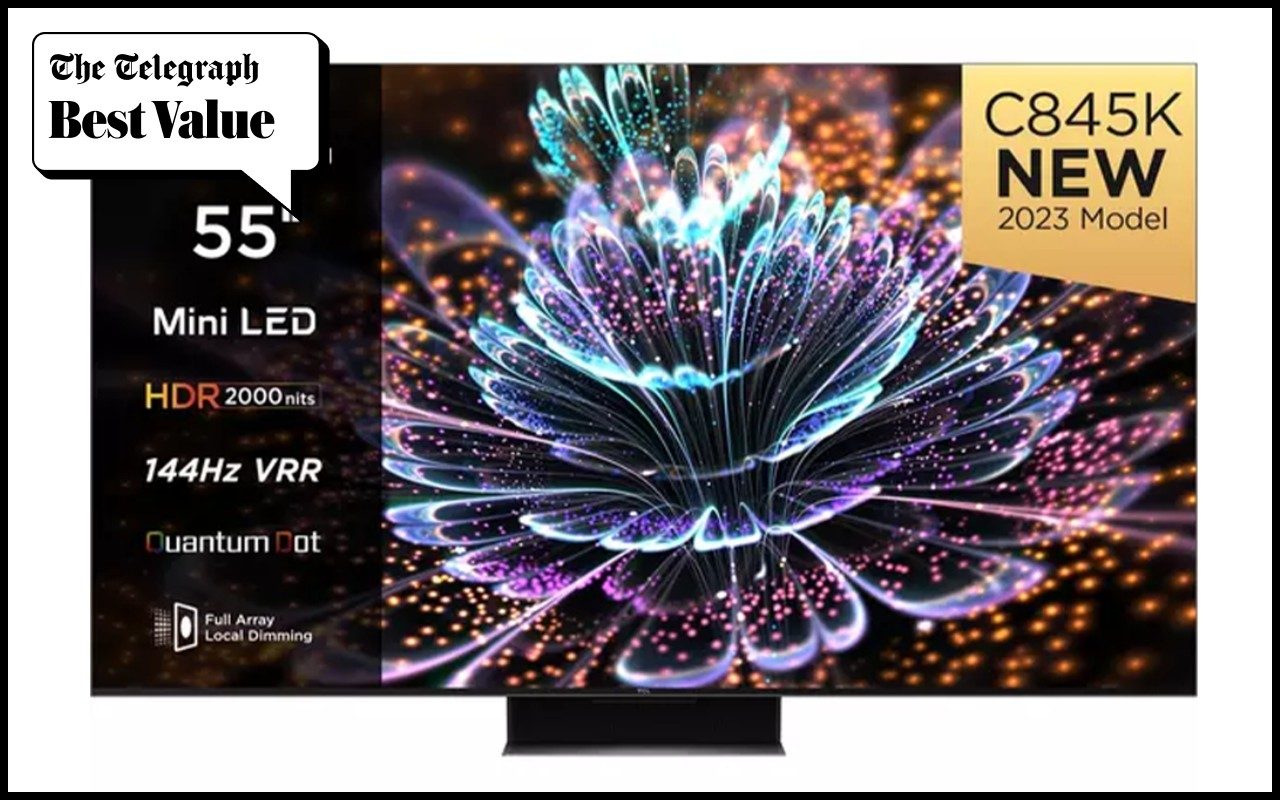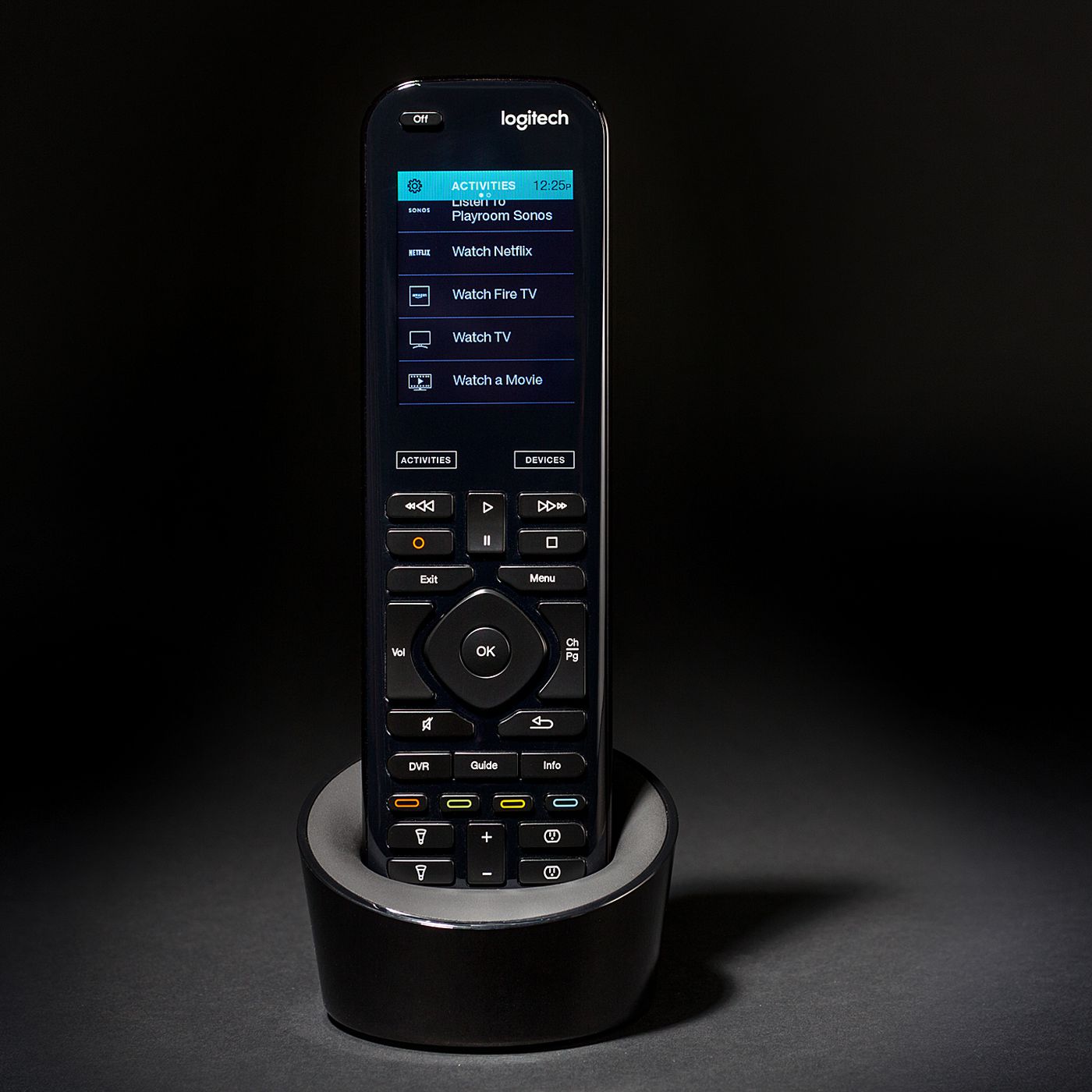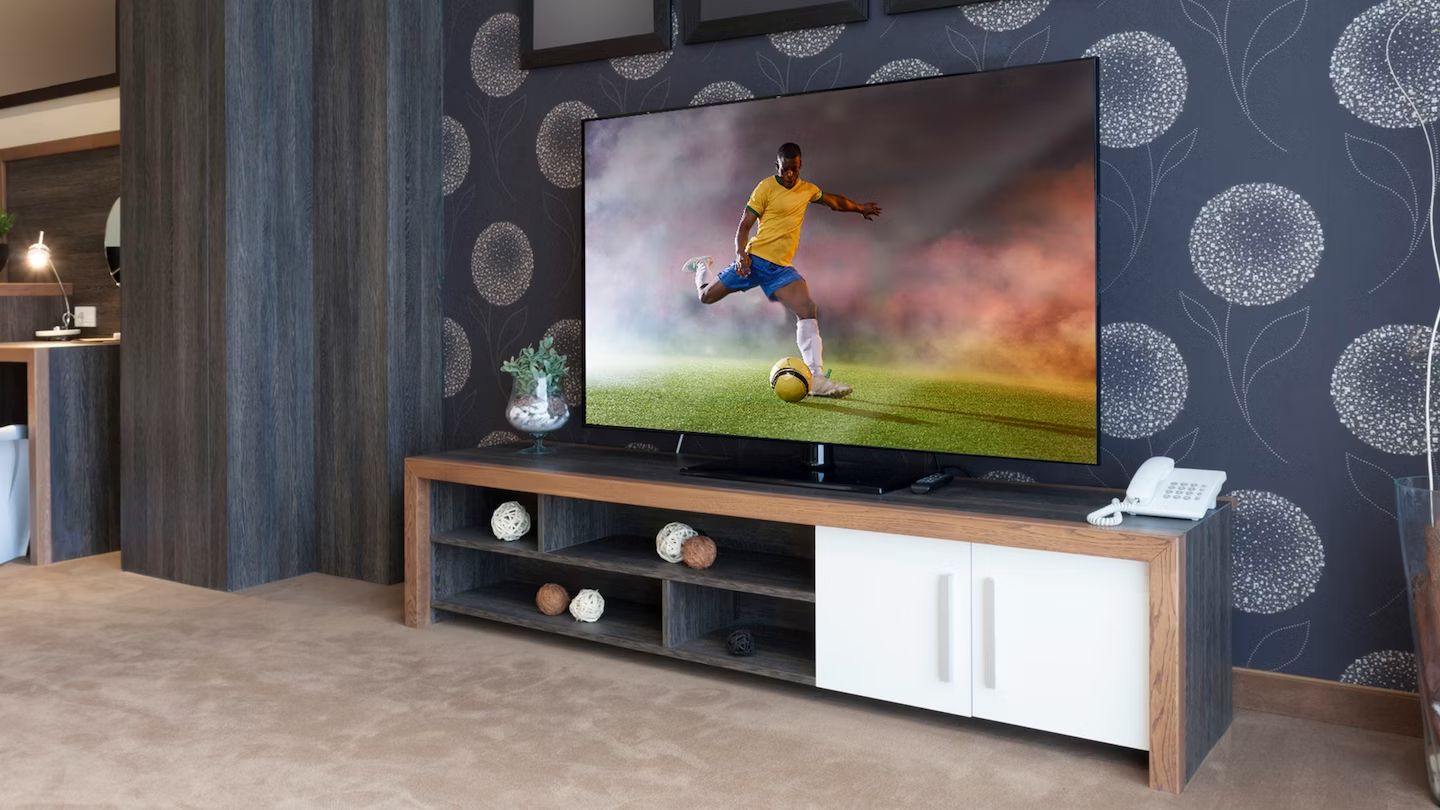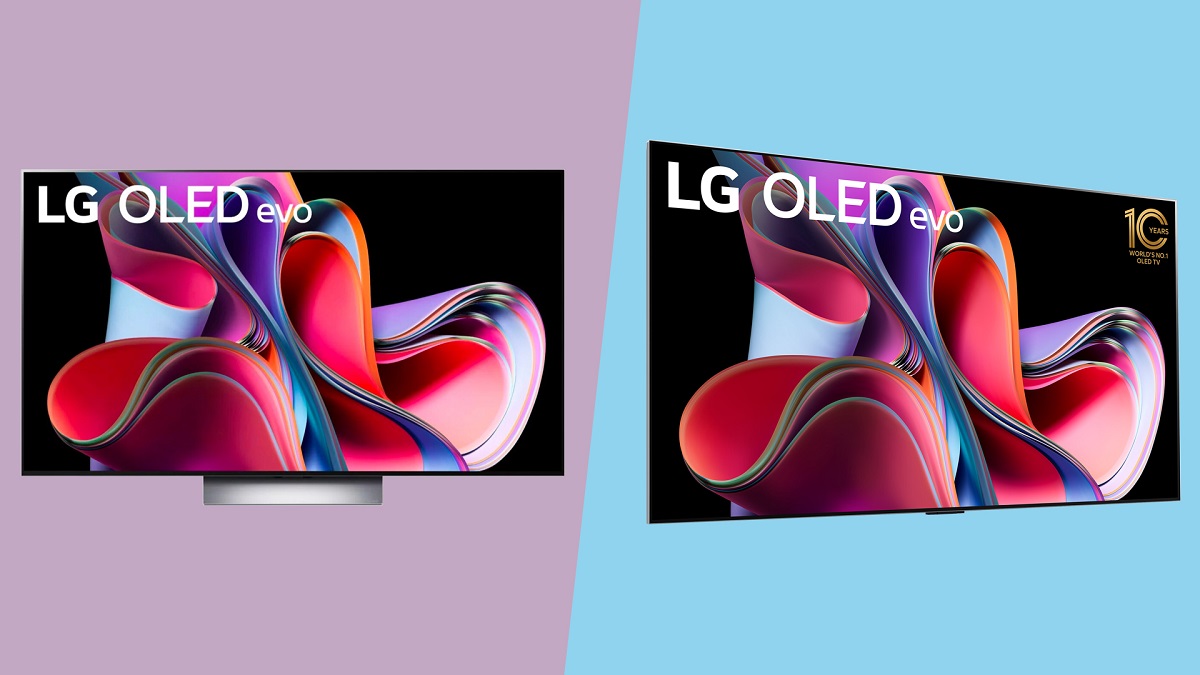Introduction
In today's digital age, our lives are intertwined with technology, and entertainment plays a significant role in our daily routines. Whether it's streaming our favorite shows, indulging in gaming sessions, or unwinding with a movie marathon, our screens are constantly emitting blue light. While this light is an essential component of modern displays, excessive exposure can have adverse effects on our well-being.
As technology continues to evolve, so does our understanding of the impact of blue light on our health. With the prevalence of smart TVs, such as Roku TVs, it's crucial to be cognizant of the potential effects of prolonged blue light exposure. Fortunately, there are measures we can take to mitigate these effects and create a more comfortable and visually appealing entertainment environment.
In this article, we will delve into the significance of addressing blue light exposure in our entertainment setup, specifically focusing on Roku TVs. By gaining insights into the effects of blue light and learning how to modify the settings on your Roku TV to reduce blue light emission, you can enhance your viewing experience while prioritizing your well-being.
Join us as we explore the impact of blue light and provide practical steps to adjust the settings on your Roku TV, ultimately enabling you to enjoy your favorite content with greater comfort and visual clarity. Let's embark on this journey to optimize your entertainment setup and create a more soothing viewing environment.
Understanding the Effects of Blue Light
Blue light is a high-energy, short-wavelength light that is emitted by various digital devices, including smartphones, computers, and TVs. While exposure to natural blue light from the sun is essential for regulating our circadian rhythm and boosting alertness during the day, prolonged exposure to artificial blue light, especially in the evening and nighttime, can have significant implications for our health and well-being.
Research has shown that excessive exposure to blue light, particularly during evening hours, can disrupt our sleep patterns by suppressing the production of melatonin, a hormone that regulates our sleep-wake cycle. This disruption can lead to difficulties falling asleep, as well as reduced overall sleep quality, ultimately impacting our cognitive function and mood the following day.
Moreover, prolonged exposure to blue light can cause digital eye strain, also known as computer vision syndrome, characterized by symptoms such as dry eyes, headaches, blurred vision, and neck and shoulder pain. The eyes' natural filters are less effective at blocking blue light, allowing it to penetrate deeper into the eye, potentially causing damage to the retina over time.
In addition to its impact on sleep and eye health, blue light exposure has been associated with potential long-term effects, including an increased risk of age-related macular degeneration, a leading cause of vision loss. While more research is needed to fully understand the extent of these risks, it is prudent to take proactive measures to reduce unnecessary exposure to blue light, especially during evening hours when our bodies are naturally preparing for rest.
As our entertainment habits increasingly involve prolonged screen time, it becomes crucial to be mindful of the potential consequences of blue light exposure. By gaining a deeper understanding of these effects, we can make informed decisions about managing and mitigating our exposure to blue light, thereby safeguarding our overall well-being.
How Blue Light Affects Your Entertainment Experience
Blue light, a prominent component of the light spectrum emitted by digital screens, profoundly influences our entertainment experience. When indulging in extended viewing sessions on devices such as Roku TVs, the impact of blue light becomes increasingly relevant.
Visual Discomfort
The prevalence of blue light in the emitted screen light can lead to visual discomfort, particularly during prolonged viewing sessions. This discomfort may manifest as digital eye strain, characterized by symptoms such as dry eyes, headaches, and blurred vision. These discomforts can detract from the immersive nature of the entertainment experience, diminishing the enjoyment derived from the content being viewed.
Sleep Disruption
Perhaps one of the most significant implications of blue light on our entertainment experience is its potential to disrupt our sleep patterns. The exposure to blue light, especially during evening hours, can suppress the production of melatonin, a hormone essential for regulating our sleep-wake cycle. Consequently, prolonged exposure to blue light from entertainment screens, such as Roku TVs, can interfere with our ability to attain restful sleep, impacting our overall well-being and vitality.
Impact on Viewing Clarity
Blue light can also affect the perceived clarity and quality of the content being viewed on the screen. Excessive blue light emission may lead to visual fatigue, reducing the sharpness and vibrancy of the images displayed. This can detract from the immersive and captivating nature of the entertainment experience, potentially diminishing the overall enjoyment and satisfaction derived from the content.
Long-term Well-being
Considering the potential long-term effects of blue light exposure, such as an increased risk of age-related macular degeneration, it becomes evident that the influence of blue light extends beyond immediate visual discomfort. By acknowledging the impact of blue light on our entertainment experience, we can make informed decisions about managing our exposure to blue light and prioritizing our long-term well-being while engaging with our favorite content on Roku TVs.
In essence, the effects of blue light on our entertainment experience encompass a spectrum of implications, ranging from immediate visual discomfort to potential long-term consequences. By recognizing and addressing these effects, we can take proactive measures to optimize our entertainment setup, ensuring a more comfortable and visually appealing viewing experience.
Steps to Turn Off Blue Light on Your Roku TV
-
Accessing the Settings: Begin by turning on your Roku TV and navigating to the home screen. Using the remote, scroll to the left and select "Settings" from the menu. This will open the settings interface, providing access to various customization options.
-
Display Settings: Within the settings menu, locate and select the "Display type" option. This will allow you to adjust the display settings, including the brightness and color temperature of your Roku TV.
-
Adjusting Color Temperature: Once in the display settings, look for the option to adjust the color temperature or picture mode. Selecting this option will present you with different presets or a manual slider to modify the color temperature settings.
-
Selecting a Warm Color Temperature: To reduce the emission of blue light from your Roku TV, opt for a warmer color temperature setting. Warmer color temperatures tend to minimize the intensity of blue light, creating a more soothing and comfortable viewing experience.
-
Fine-tuning the Settings: Depending on your preferences and the ambient lighting conditions in your viewing environment, you can fine-tune the color temperature settings to achieve the desired balance between visual comfort and image clarity. Experiment with different settings to find the optimal configuration that suits your preferences.
-
Enabling Night Mode: Some Roku TV models offer a dedicated night mode feature designed to reduce blue light emission during evening hours. This mode automatically adjusts the color temperature and brightness of the display, creating a more subdued and eye-friendly viewing experience, particularly in low-light conditions.
-
Utilizing Third-Party Apps: Alternatively, you can explore the availability of third-party apps or features that specifically target blue light reduction on Roku TV. These apps may offer additional customization options and scheduling features to align with your viewing habits and preferences.
By following these steps, you can effectively reduce the blue light emission from your Roku TV, promoting a more visually comfortable and soothing entertainment experience. Prioritizing the well-being of your eyes and overall viewing comfort, these adjustments allow you to enjoy your favorite content with greater ease and reduced potential impact on your sleep quality.
Additional Tips for Reducing Blue Light Exposure
In addition to adjusting the settings on your Roku TV to minimize blue light emission, there are several supplementary measures you can implement to further reduce your overall exposure to blue light. These additional tips encompass various aspects of your entertainment setup and daily habits, aiming to create a more holistic approach to mitigating the potential effects of blue light on your well-being.
1. Use Blue Light Filtering Glasses
Consider investing in blue light filtering glasses designed to reduce the amount of blue light that reaches your eyes. These specialized glasses can be worn during extended viewing sessions, effectively minimizing the impact of blue light on your eyes and potentially alleviating symptoms of digital eye strain.
2. Implement Ambient Lighting
Introduce ambient lighting in your viewing environment to create a balanced illumination that complements the display of your Roku TV. By incorporating soft, warm lighting around the viewing area, you can reduce the relative intensity of the emitted blue light, contributing to a more visually comfortable and harmonious setting.
3. Schedule Screen Time Breaks
Adopt a habit of taking regular breaks during extended screen time sessions. Incorporating brief intervals to rest your eyes and engage in non-screen activities can help mitigate the cumulative effects of blue light exposure. Consider following the 20-20-20 rule, where every 20 minutes, you look at something 20 feet away for at least 20 seconds to provide relief to your eyes.
4. Explore Blue Light Filtering Apps
Explore the availability of blue light filtering apps or software that can be utilized in conjunction with your Roku TV. These applications are designed to adjust the color temperature and brightness of your screen, effectively reducing blue light emission and promoting a more eye-friendly viewing experience.
5. Optimize Room Lighting
Ensure that the overall lighting in your viewing environment is conducive to minimizing the impact of blue light. By strategically positioning and adjusting the brightness of ambient and overhead lighting, you can create a balanced visual environment that complements the reduced blue light settings on your Roku TV.
By integrating these additional tips into your entertainment setup and daily routines, you can cultivate a more comprehensive approach to reducing blue light exposure. Embracing a combination of technological adjustments, environmental considerations, and proactive habits empowers you to create a more comfortable and visually appealing viewing experience while safeguarding your well-being.
Conclusion
In conclusion, the management of blue light exposure in our entertainment setup, particularly when using Roku TVs, holds significant implications for our overall well-being and viewing comfort. By understanding the effects of blue light and taking proactive measures to reduce its impact, we can create a more visually comfortable and soothing environment for enjoying our favorite content.
The adverse effects of blue light, ranging from digital eye strain to potential disruptions in sleep patterns, underscore the importance of addressing this aspect of our entertainment experience. Through the adjustment of color temperature settings and the utilization of features such as night mode on Roku TVs, we can effectively minimize blue light emission, promoting a more eye-friendly viewing experience, especially during evening hours.
Furthermore, the incorporation of additional measures, such as blue light filtering glasses, ambient lighting, and scheduled screen time breaks, contributes to a holistic approach in mitigating the potential effects of blue light. By integrating these strategies into our entertainment setup and daily habits, we can cultivate a more balanced and visually harmonious viewing environment, prioritizing our well-being while indulging in our favorite shows, movies, and games.
Ultimately, the journey to optimize our entertainment setup and reduce blue light exposure on Roku TVs is a testament to our commitment to enhancing our viewing experience while safeguarding our long-term visual health. By embracing the insights and practical steps outlined in this article, we empower ourselves to make informed decisions that resonate with our well-being, ensuring that our entertainment endeavors are not only visually captivating but also conducive to our overall comfort and vitality.
As we navigate the dynamic landscape of modern entertainment, let us continue to prioritize the well-being of our eyes and embrace the evolving possibilities for creating a more visually comfortable and immersive viewing experience. With each intentional adjustment and proactive measure, we pave the way for a more holistic and enjoyable entertainment journey, where the allure of captivating content is complemented by a nurturing environment that supports our well-being.










